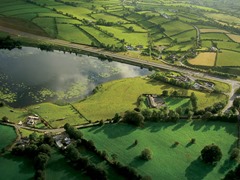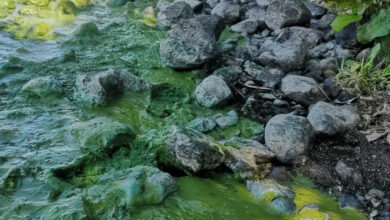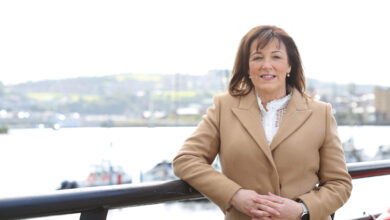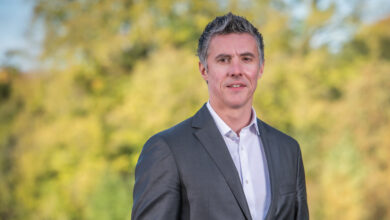The state of our environment
 Every year, the Northern Ireland Environment Agency assesses the state of the region’s environment. agendaNi considers the trends for biodiversity, the quality of our air, climate, land and water, and human influences on the natural world.
Every year, the Northern Ireland Environment Agency assesses the state of the region’s environment. agendaNi considers the trends for biodiversity, the quality of our air, climate, land and water, and human influences on the natural world.
Biodiversity
For many people, the variety of bird, plant and animal life that they see every day is the best sign of a good environment.
Bird counts are seen as a good measure of a healthy countryside, especially as they are easier to spot than other species. In a worrying trend, the overall wild bird population has been falling year-on-year since 2007. The mistle thrush, skylark and meadow pipit (pictured clockwise from left) are all decreasing but the blackbird and chaffinch are increasing.
The number of seabirds has fallen slightly since 1994 (down 4 per cent) but the number of freshwater wetland birds has more than halved (down 54 per cent). Diving duck species on Lough Neagh have been particularly badly affected. Ornithologists believe that some species are wintering closer to their breeding sites, due to the milder winters.
The Department of the Environment has imposed 555 tree preservation orders (TPOs) over the last 10 years. TPOs are, though, becoming less common, possibly due to less construction work taking place or fewer requests from environmentalists or the general public.
The number of adult seals in Strangford Lough is increasing and stood at 202 (along with 28 pups) last year.
A more detailed State of Biodiversity report will be published later this year.
Air & climate
Northern Ireland’s residential areas have the same level of a particularly harmful chemical as some industrial areas in Great Britain. Benzo(a)pyrene can increase the risk of cancer and is mainly generated by burning solid fuels such as coal.
Ozone levels vary from year to year, depending on weather conditions and air flows across national boundaries. The target for ozone concentration (100 μg/m3) is regularly exceeded. Ammonia emissions from agriculture decreased by 6 per cent over 2001-2011.
Regional greenhouse gas emissions decreased by 15 per cent between 1990 and 2010, lower than the UK-wide reduction of 24 per cent. A short-term rise (up 4 per cent) over 2009-2010 was due to the consecutive cold winters.
Some records indicate that the province’s climate has been warming for more than a century. Met Office records began in 1844. The lowest mean minimum temperature was 3.95°C in 1879 and the highest was 7.02°C in 1997. The lowest mean maximum was also recorded in 1879 (10.7°C) while the highest was in 2007 (14.4°C).
Land
Northern Ireland’s landscape is greatly valued but is also a limited resource. Soil quality has improved slightly since 2005-2006 with a minor reduction in phosphate-related pollution. Around 40 per cent of farmland (444,000 hectares) is managed under agri-environment schemes.
313 hectares of new woodland were planted in 2011-2012, up from 252 in the previous year but down from the 500-700 hectares per year planted in the early 2000s. Most new plantings are from broadleaf species. The number of housing completions fell sharply from 5,095 in 2009-2010 to 2,374 in the following year.
Land
Northern Ireland’s landscape is greatly valued but is also a limited resource. Soil quality has improved slightly since 2005-2006 with a minor reduction in phosphate-related pollution. Around 40 per cent of farmland (444,000 hectares) is managed under agri-environment schemes.
313 hectares of new woodland were planted in 2011-2012, up from 252 in the previous year but down from the 500-700 hectares per year planted in the early 2000s. Most new plantings are from broadleaf species. The number of housing completions fell sharply from 5,095 in 2009-2010 to 2,374 in the following year.
Demography & public opinion
The number of Northern Ireland’s households is increasing faster than its population due to the declining number of people per household. Population is projected to rise by 12 per cent between 2011 and 2031 with the number of households increasing by 26 per cent.
Airport passenger numbers (6.9 million in 2011) have increased by 39 per cent since 2001 but fallen by 16 per cent since the peak: 8.2 million in 2008. The number of journeys fell by 7 per cent over 2001-2011 but the proportions by mode are essentially unchanged:
• 72 per cent by car;
• 16 per cent by walking;
• 5 per cent by public transport; and
• 7 per cent by other modes (e.g. cycling).
The recession has distracted many people from thinking about the environment. The proportion who are “not very concerned” or “not at all concerned” rose from 18 per cent in 2008-2009 to 28 per cent two years later.
The public considers household waste disposal to be the most important environmental problem (39 per cent of respondents), followed by river pollution, climate change and traffic congestion (all on 31 per cent). The most popular actions to help the environment were using energy saving light bulbs (72 per cent), reusing plastic bags (69 per cent) and reducing energy use in the home (49 per cent). Public opinion was surveyed in the 2011-2012 Continuous Household Survey.





